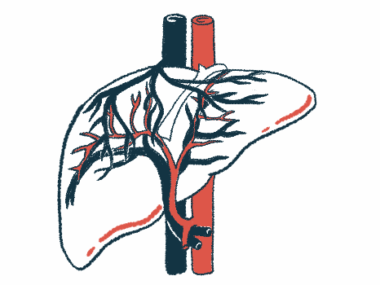Neurotensin may be new blood biomarker of biliary atresia
High levels of small protein likely contribute to liver damage in BA: Study
Written by |

Levels of neurotensin, a small protein highly present in the gastrointestinal tract, are higher than normal in the blood and liver of biliary atresia (BA) patients — and these likely contribute to the liver damage that marks the disease, a study showed.
Data also showed that blood neurotensin levels may help diagnose biliary atresia earlier and faster than do current methods. Specifically, combining neurotensin levels with those of previously identified BA blood biomarkers — either gamma-glutamyltransferase (GGT), matrix metalloprotease-7 (MMP7), or interleukin 8 (IL8) — was more effective at diagnosing the disease than were the single markers.
“By integrating [blood] levels of GGT, MMP7, IL8, and NTS [neurotensin], a more precise distinction between BA and non-BA diseases can be achieved,” the researchers wrote, adding that the protein’s “diagnostic utility … has piqued interest.”
The study, “Neurotensin contributes to cholestatic liver disease potentially modulating matrix metalloprotease-7,” was published in The International Journal of Biochemistry & Cell Biology.
Biliary atresia diagnosis now typically involves surgery
Biliary atresia, often simply called BA, is a rare liver disease affecting infants. It is marked by the blockage or absence of certain bile ducts that transport bile, a digestive fluid, from the liver to the small intestines.
This leads to slowed or stalled bile flow, a condition called cholestasis, and bile buildup in the liver that damages the organ. Given that, over time, biliary atresia can progress to liver failure, early diagnosis and prompt treatment are paramount to ensure better outcomes, according to the researchers.
As of now, a biliary atresia diagnosis is made with the help of fluorescent dye — however, the process typically involves open surgery. A blood test that could accurately identify biliary atresia would make the diagnostic procedure easier and improve timely access to treatment.
Neurotensin is a small protein predominantly found in the central nervous system (the brain and spinal cord) and the gastrointestinal tract, where one of its functions is to facilitate the secretion of bile from the liver and its absorption in the intestine.
Now, a team led by researchers at the Shanghai Jiao Tong University, in China, investigated the role of neurotensin in biliary atresia. To that end, they measured the blood levels of neurotensin in samples from 139 biliary atresia patients and 50 people with a bile duct cyst or non-cholestasis gastrointestinal diseases, who served as controls.
The results showed significantly higher circulating levels of neurotensin in biliary atresia patients relative to the controls (a mean of 85.97 vs. 29.01 nanograms per liter, ng/L).
The researchers then used a statistical tool called area under curve, or AUC, to determine the diagnostic potential of blood neurotensin levels for biliary atresia. Essentially, AUC values, ranging from 0-1, reveal how well a diagnostic test performs, with higher values indicating a better ability to correctly identify people with a given condition.
A cut-off value of circulating neurotensin of 37.35 ng/L showed a good ability to discriminate individuals with and without biliary atresia, as shown by an AUC value of 0.86.
Past studies had reported increased circulating levels of GGT, a liver damage marker, the MMP7 enzyme, and the pro-inflammatory protein IL-8 in BA patients. As such, the team also assessed the AUC of combining neurotensin levels with those of each of these markers.
Use of neurotensin could help differentiate BA cases
The highest AUC value — 0.94 — was seen when combining neurotensin and GGT, followed by neurotensin and IL8 (AUC of 0.89), and the protein and MMP7 (AUC of 0.87).
Further tests indicated that high neurotensin levels were significantly associated with high levels of GGT, MMP7, and IL-8. The same was seen between neurotensin levels and several other markers of liver damage, including bilirubin, bile acids, and liver enzymes.
An analysis of fetal mice liver showed that neurotensin was primarily produced in biliary cells, while neurotensin receptor proteins were mainly present in cholangiocytes — the cells lining bile ducts. In addition, bile acids were found to stimulate the protein’s production in lab-grown mice cholangiocytes.
The researchers then investigated the relationship between neurotensin and MMP7 in the liver, specifically in the bile ducts. For this, they generated mouse biliary organoids, or three-dimension cultures of isolated bile ducts located inside the liver.
Adding neurotensin suppressed the organoid’s growth when compared with organoids given a saline solution. Further, this treatment also resulted in a greater production of the MMP7 enzyme in both biliary organoids and lab-grown human cholangiocytes.
Neurotensin had a detrimental impact on cholangiocytes’ mitochondria, which are the cell’s powerhouses, with cells exposed to neurotensin showing lower levels of ATP, the molecular currency of energy in cells.
[This study] revealed that patients with BA exhibit elevated levels of NTS [neurotension] in both their [blood] and liver. Additionally, [blood] levels of NTS, GGT, MMP7, and IL8 … can serve as diagnostic markers to differentiate BA cases.
Additional experiments showed that neurotensin contributes to cholestasis-related liver damage via one of its receptor proteins, called NTSR1, which is located at the cell’s surface.
In a mouse model of cholestasis, deletion of the gene that codes for NTSR1 eased liver scarring, and reduced levels of MMP7.
This study “revealed that patients with BA exhibit elevated levels of NTS in both their [blood] and liver. Additionally, [blood] levels of NTS, GGT, MMP7, and IL8 … can serve as diagnostic markers to differentiate BA cases,” the researchers concluded.






